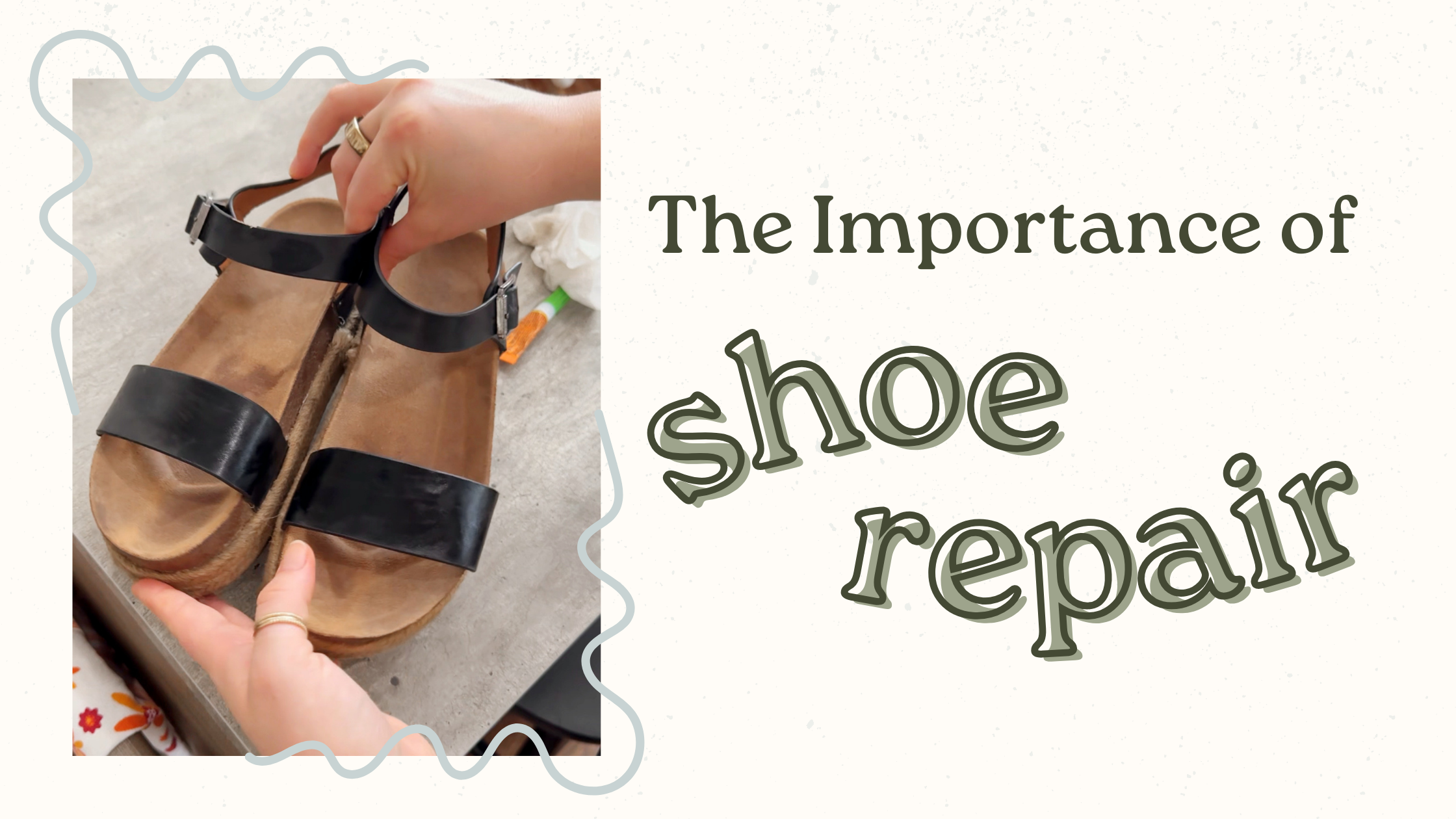Why is it more Sustainable to Repair Shoes?
The Art of Repair: A Sustainable Approach to Consumption
In today's fast-paced world of constant consumption, it's easy to fall into the trap of replacing items at the first sign of wear and tear. However, embracing a more sustainable lifestyle means challenging this throwaway culture and adopting a mindset of repair and reuse. Let’s explore the importance of repairing your belongings and how this simple act can contribute to a more eco-friendly and low-waste lifestyle.
The Power of Repair in Sustainable Living
Repairing items instead of replacing them is a cornerstone of sustainable living (and a way to save some money!). It's a practice that not only reduces waste but I’ve found it also promotes a more mindful approach to consumption. By fixing what we already own, we extend the life of our possessions, reducing the demand for new products and the resources required to produce them. This is GREAT news for your favorite items because it means they get to live the longest possible life in your home by taking care of them!
I’ve been embracing the this “repair-first” mentality because it aligns perfectly with the principles of a low-waste lifestyle - and to be completely honest, I feel a fuller life because of it! Every item that gets repaired is one less item in the landfill, one less drain on our planet's resources, and one step closer to a more sustainable future. Who wouldn’t love the sound of that?!
Environmental Impact of Repair vs. Replace
Even though it may feel small, the environmental benefits of repairing items is significant! Manufacturing new products requires energy, raw materials, and often results in pollution. By choosing to repair, we:
Reduce demand for new products, lowering manufacturing emissions
Decrease the amount of waste sent to landfills
Conserve natural resources used in production
Minimize packaging waste associated with new purchases
These eco-friendly choices contribute to a lower carbon footprint and a more sustainable lifestyle overall.
Economic Benefits of Repairing
Adopting a repair-first approach isn't just good for the environment; it's also beneficial for your wallet. Repairing items is often significantly cheaper than buying new ones. Over time, these savings can add up, allowing you to allocate your resources more efficiently and sustainably.
Moreover, learning repair skills can be empowering. It fosters self-reliance and can even lead to new hobbies or side hustles in our increasingly DIY-oriented world.
Cultivating a Low-Waste Mindset
Embracing repair as a first option helps cultivate a low-waste mindset. It encourages us to view our possessions not as disposable commodities, but as valuable resources worthy of care and maintenance. This shift in perspective is crucial for anyone striving to lead a more sustainable lifestyle.
By valuing what we own and investing time in its upkeep, we naturally become more discerning consumers. We're more likely to choose quality items that are built to last and designed for repair, further reducing our long-term waste output.
Practical Tips for Embracing Repair
Ready to embrace the repair revolution? Here are some practical tips to get started:
Learn basic repair skills: Start with simple tasks like Super Gluing things together, and then move into other methods like sewing buttons or patching clothes.
Invest in quality repair tools: A good set of tools can make repairs easier and more effective! My sewing machine is about 10 years old, but still kicking!
Support local repair shops: When you can't DIY, support businesses that specialize in repairs. Many towns offer cobblers or repair shops with professionals who can help.
Join a repair cafe: Many communities host events where volunteers help repair items for free! I’ve even seen community events where the whole event was around mending clothes!
Think creatively: Sometimes, a broken item can be repurposed into something new and useful. Ripped jeans? Try turning them into jean shorts!
Overcoming the Replacement Mindset
One of the biggest challenges in adopting a repair-first approach is overcoming the ingrained habit of replacing items. Social media leads us to believe that “everyone” is buying the latest trends and if you can’t keep up - then tough luck! I’m here to tell you that it is completely normal to have a home or closet filled with staple pieces that are well-loved. Marketing and societal norms often push us towards buying new, but resisting this urge is key to a more sustainable lifestyle.
Next time something breaks, pause before reaching for your wallet. Ask yourself: Can this be repaired? How can I fix this? By making repair your default response, you'll be amazed at how much you can reduce your consumption and waste.
Repair as a Sustainable Lifestyle Choice
In conclusion, repairing items rather than constantly purchasing replacements is a powerful way to live more sustainably. It's an eco-friendly, low-waste approach that benefits both the environment and your finances. By embracing repair, we move closer to a zero-waste ideal and challenge the throwaway culture that has become all too common.
Remember, every repair is a small victory for sustainability. It's a tangible way to reduce your environmental impact and contribute to a more mindful, resourceful way of living. So the next time something breaks, don't rush to replace it – consider repair first and take another step towards a more sustainable future!
xoxo,
Krys <3



